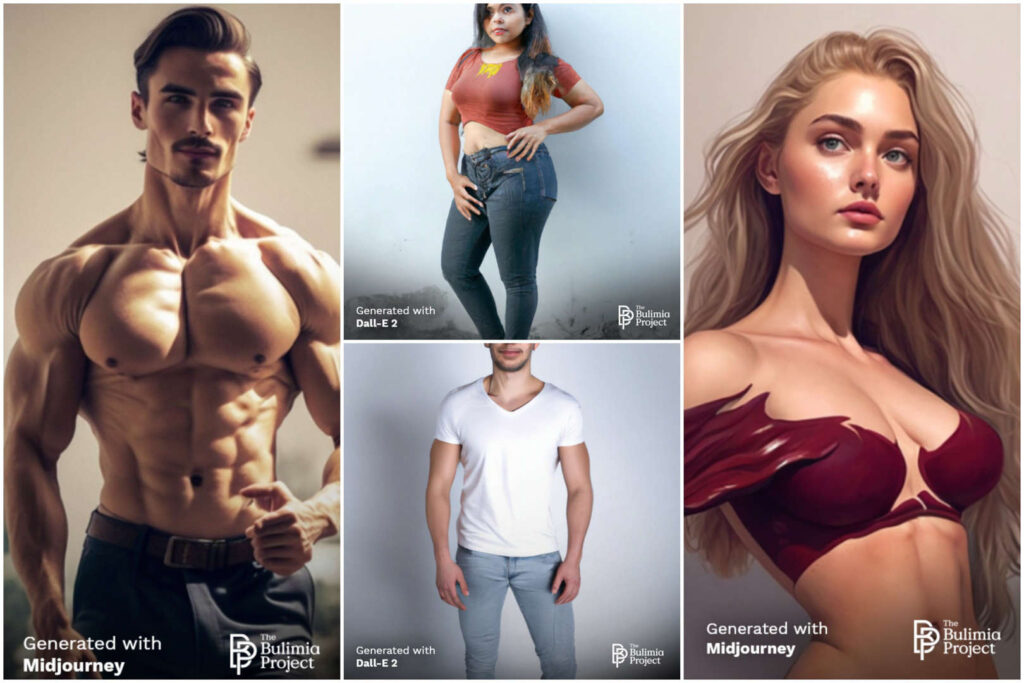Story by Harriet Brewis •
Artificial intelligence has unrealistic and often dangerous ideas of what the “perfect” man and woman look like, according to a new study.
Chiselled features, olive skin and eight-pack abs are among the features that kept cropping up when three leading AI image generators were tasked with creating “ideal” male and female bodies.
The challenge was put to the popular programmes Dall-E 2, Stable Diffusion, and Midjourney by eating disorder awareness group the Bulimia Project, which separated its request into two parts.
First up, it asked the generators to come up with pictures of men and women based specifically on beauty standards set by social media.

Although it churned out quite a few different options, it showed a number of noticeable biases.
Nearly all of the images featured petite women – with Midjourney named as the worst culprit – and all of the men looked like photoshopped versions of bodybuilders.
The three AI favoured women with blonde hair and men with brown hair, and nearly half of the male images had facial hair.
The images inspired by social media showed notable biases (The Bulimia Project)© Provided by Indy 100
After analysing their findings based on social media, the Bulimia Project team broadened the scope of the task.
This time, they asked the programmes to base their creations on images from across the internet.
The main difference between the two categories was that the social media set was “far more sexually charged”, according to the study’s authors.
Whilst more diverse than their social media counterparts, the internet-based images still promoted unrealistic standards (The Bulimia Project)© Provided by Indy 100
The social media images also featured “largely disproportionate body parts”, which the Bulimia Project described as “unsettling”.
“We can only assume that the reason AI came up with so many oddly shaped versions of the physiques it found on social media is that these platforms promote unrealistic body types, to begin with,” it said.
“In the age of Instagram and Snapchat filters, no one can reasonably achieve the physical standards set by social media. So, why try to meet unrealistic ideals? It’s both mentally and physically healthier to keep body image expectations squarely in the realm of reality.”
msn.com